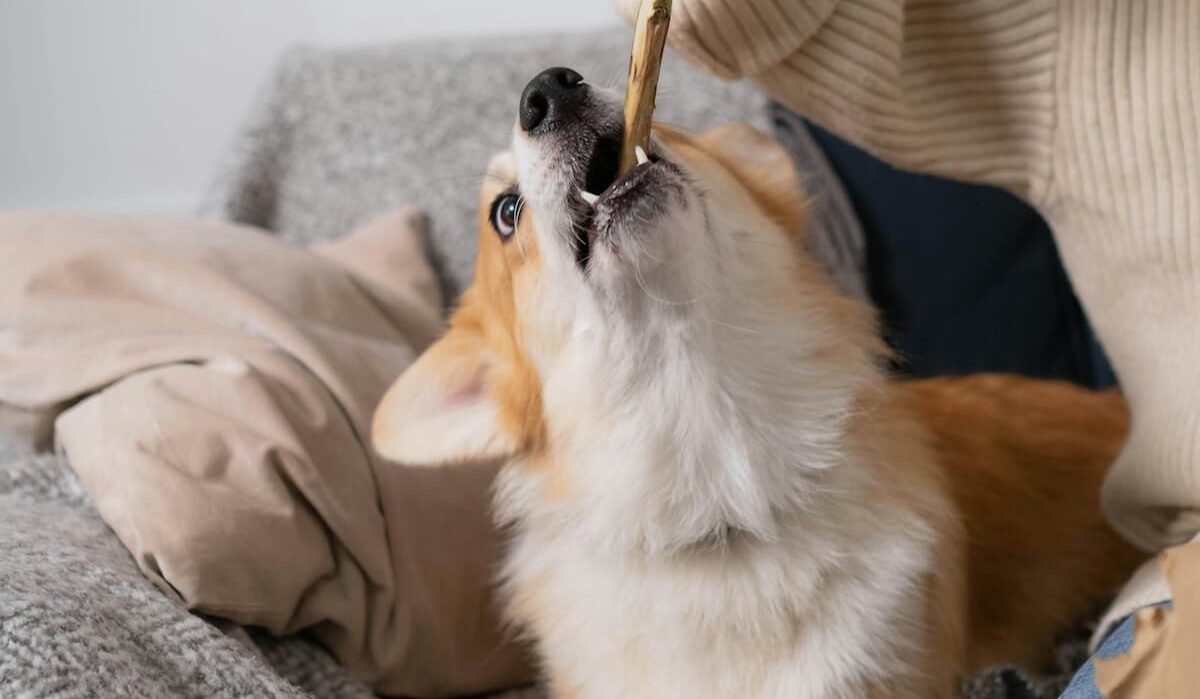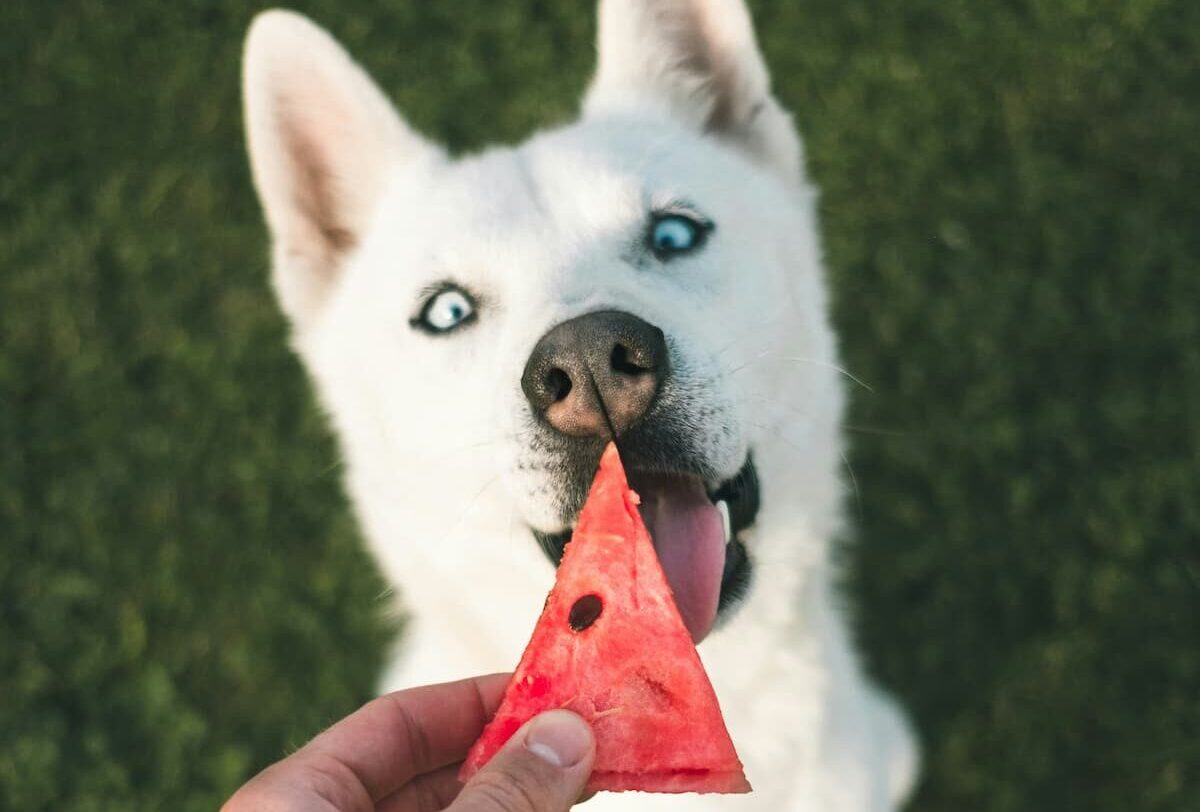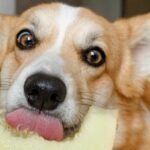Have you ever had a dog that seems to have an insatiable appetite for, well, everything?
You know the type – the furry friend who sniffs out and devours sticks, shoes, socks, and even the occasional dirty tissue.
It’s a never-ending scavenger hunt turned reckless eating spree.
But have you ever wondered why dogs have this seemingly uncontrollable desire to feast on just about anything?
Read on to have your questions answered.
Why Do Dogs Have a Flair for Munching on Everything?
Dogs have always been known to have an insatiable appetite, and it seems like their quest to devour anything in sight is never-ending.
This behavior, known as pica, can be a cause for concern for pet owners.
Pica is characterized by the ingestion of non-food items, such as rocks, socks, or even household objects.
Here are some possible reasons for why your dog is engaging in pica:
1. Boredom and Energy Release: Dogs are active creatures that need mental and physical stimulation.
When they don’t get enough exercise or mental enrichment, they may resort to chewing as a way to relieve their boredom or excess energy.
2. Teething Troubles: Just like human babies, puppies go through a teething phase too.
During this time, their gums may be sore and itchy, causing them to chew on objects to alleviate the discomfort.
Providing appropriate chew toys designed specifically for teething can help redirect their chewing behavior and soothe their gums.
3. Anxiety and Stress Relief: Dogs can experience anxiety and stress, and chewing can be a coping mechanism for them.
Similar to how humans might bite their nails or fidget when feeling anxious, dogs often turn to chewing as a way to self-soothe.
4. Curiosity: Dogs are naturally curious creatures, and exploring the world through their mouth is a way for them to satisfy their curiosity.
Just like human babies who put everything in their mouths, dogs use their sense of taste to learn about their surroundings.
This behavior is especially common among puppies who are still in the process of discovering the world around them.
5. Need to Chew: Chewing is not only a way for them to exercise their jaws and keep their teeth clean, but it also provides them with mental stimulation.
When dogs chew on objects, it releases endorphins in their brains, making them feel happy and satisfied.
6. Natural Instincts: Dogs, just like their wild ancestors, are natural scavengers.
In the wild, finding food was a matter of survival, so dogs developed a keen sense of smell and an innate curiosity to investigate anything that could potentially be a source of nutrition.
Even though our furry friends are well-fed and cared for, these instincts are still deeply ingrained in their DNA, driving them to explore their surroundings in search of that next tasty morsel.
7. Highly Developed Sense of Taste: Dogs have around 1,700 taste buds, which may not seem like much compared to humans’ 9,000, but their taste buds are far more sensitive.
This means that even the tiniest crumb of food can trigger an irresistible urge to gobble it up.
It’s almost as if their taste buds are constantly on high alert, always on the lookout for the next delicious discovery.
8. Nutritional Deficiency: Some dogs may eat rocks or dirt in an attempt to fulfill their dietary needs, such as missing minerals or vitamins.
9. Underlying Diseases: Dogs may engage in this behavior due to gastrointestinal issues, such as inflammatory bowel disease or parasites.
Steps to Curb Your Dog’s Compulsive Eating Habits
Now that we understand why dogs have this urge to eat everything, let’s explore some steps to curb their compulsive eating habits.
Firstly, it’s crucial to ensure that your dog is getting an adequate and balanced diet.
Feeding your pet with a high-quality dog food that meets their nutritional needs will help keep them satiated and reduce their cravings for random snacks or non-edible objects.
Additionally, providing your pup with plenty of toys, puzzles, and interactive activities can keep their minds occupied and reduce the likelihood of them seeking out odd items to chew on.
Lastly, regular exercise and playtime are essential to release your dog’s energy and provide them with a healthy outlet for their natural instincts.
By implementing these steps and understanding the underlying causes, you can help your furry friend overcome their compulsive eating habits.
Remember, patience and consistency are key when training your dog.
So, let’s embark on this journey together and ensure our canine companions lead healthier and happier lives, free from the temptation to eat everything in sight.
FAQ
Q: What’s the deal with dogs and their crazy scavenging behavior?
A: The truth is, dogs have a primal instinct to scavenge and explore.
Back in their wild ancestors’ days, finding food was a constant challenge.
So when they stumble upon something that remotely resembles sustenance, their brains go haywire and it triggers their scavenging mode.
Q: Why do dogs sometimes eat things that aren’t even edible?
A: Ah, good question!
Turns out, our four-legged buddies aren’t always the best judges of what’s edible and what’s not.
Sometimes, their curious noses lead them to something that smells interesting or appetizing, despite the fact that it might pose a choking hazard or, well, just not be food at all.
Silly doggos!
Q: Is there any specific reason why dogs are attracted to food scraps?
A: Absolutely!
Picture this: you’re making a delicious meal in the kitchen, and the heavenly aroma fills the air.
Your dog, with its exceptional sense of smell, catches a whiff of that irresistible scent, and voila!
Suddenly, they transform into a food-seeking missile.
Those food scraps represent a jackpot in their eyes, like finding a pot of gold at the end of a rainbow.
Q: How can I stop my dog from gobbling up everything in sight?
A: Training, my friend!
Training is the key to preventing your pup from becoming a vacuum cleaner.
Teach your dog the “leave it” or “drop it” command.
It takes time and patience, but when your pup learns to obey these commands, you’ll be able to divert their attention away from potential hazards or random objects that they don’t need to consume.
Q: Is this behavior more common in certain breeds?
A: While all dogs have the potential to be little munching machines, there are a few breeds that seem to have a higher likelihood of exploring the world with their mouths.
Labrador Retrievers, Beagles, and Golden Retrievers are notorious for their curious nature and love for food, making them quite the gastronomic adventurers!
Q: Should I be concerned if my dog eats something they shouldn’t?
A: Well, if your dog has swallowed something harmless like a small toy or a grass blade, they’ll likely pass it without any issues.
However, if you suspect your pup has ingested something dangerous or toxic, it’s time to consult your vet immediately.
Better to be safe than sorry, right?
Q: Is there any way to curb about ‘dogs want to eat everything’ behavior?
A: While it’s unlikely you’ll completely eliminate your dog’s desire to explore with their mouths, you can take a few measures to reduce the risk.
Keeping your environment clear of potential hazards, providing plenty of chew toys and engaging in regular exercise and mental stimulation can help satisfy their urge to scavenge.
Q: So, at the end of the day, why do dogs want to eat everything?
A: Well, my friend, it all boils down to their natural instincts, their keen sense of smell, and their insatiable curiosity.
As their adoring owners, we just need to embrace their quirks, keep an eye out for anything dangerous, and enjoy their amusing adventures through the world of edibles and non-edibles alike!
Final Thoughts
From socks to shoes, and even full-on garbage cans, dogs seem to have a desire to devour just about anything that comes their way.
But why do they have this obsession with consuming everything in sight?
Well, it turns out there are a few reasons behind their seemingly bottomless stomachs.
First and foremost, let’s not forget that dogs are descendants of wolves.
Back in their wild days, wolves had to scavenge for food to survive.
This innate instinct to grab whatever edible item they could find has been passed down through generations of domesticated dogs.
So when they catch a whiff of that leftovers or that freshly baked pie sitting on the kitchen counter, their primal instinct kicks in, and they just can’t resist.
Furthermore, dogs explore the world through their mouths.
Ever noticed them sniffing around, gathering information with their noses?
Well, that’s just the first step of their thorough investigation.
Once they find something intriguing, they instinctively use their mouths to explore it further.
Picking up objects and giving them a taste is their way of gathering more information about the world around them.
It’s like their version of a scientific experiment, except with a lot more slobber involved!
But it’s not just curiosity driving their munching habits.
Dogs also rely on their sense of taste to identify potential hazards or toxins.
They have a highly developed taste sense, capable of detecting bitter or sour flavors that might signal the presence of something dangerous.
So, in a sense, their desire to taste everything is also serving as a built-in protection mechanism, making sure they avoid ingesting harmful substances.
Of course, it’s important to remember that not all objects are safe for our furry friends to ingest.
While some things may pass harmlessly through their digestive systems, others can cause serious health issues.
That’s why it’s crucial to keep a watchful eye on our canine companions, especially during those curious exploratory phases.
So, the next time you catch your dog attempting to chomp down on something they shouldn’t, remember that it’s just their natural instincts at play.
While it can be amusing and endearing, it’s important to strike a balance between allowing them to explore the world and keeping them safe.
And who knows, maybe one day scientists will discover a foolproof way to decipher the mysteries behind our furry friends’ incessant desire to eat everything in sight.
But until then, let’s just keep our shoes and socks out of their reach!














